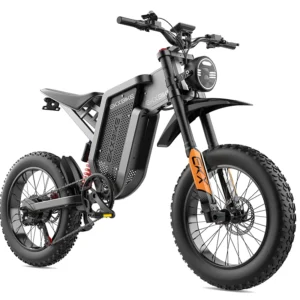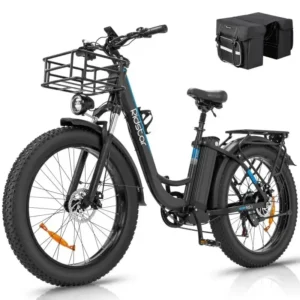Apsverot elektrotransportlīdzekļu (ET) izmaksas, ir svarīgi raudzīties tālāk par sākotnējo pirkuma cenu. Lai gan ET sākotnējās izmaksas var būt augstākas nekā tradicionālajam iekšdedzes dzinēja transportlīdzeklim, kopējo finansiālo ainu ietekmē dažādi faktori. Piemēram, daudzas valdības piedāvā tādus stimulus kā nodokļu atlaides, kompensācijas un dotācijas, lai veicinātu elektrotransportlīdzekļu ieviešanu.
Šie stimuli var ievērojami samazināt faktisko pirkuma cenu, padarot elektrotransportlīdzekļus finansiāli pieejamākus plašākai auditorijai. Turklāt kopējās īpašumtiesību izmaksas bieži vien ir labvēlīgākas elektrotransportlīdzekļiem zemāku ekspluatācijas izmaksu dēļ. Elektrotransportlīdzekļiem parasti ir mazāk kustīgu detaļu nekā to benzīna dzinējiem, kas nozīmē samazinātas apkopes izmaksas.
Piemēram, elektromotoriem nav nepieciešama eļļas maiņa, un bremžu nodilums ir samazināts līdz minimumam, pateicoties reģeneratīvajām bremzēšanas sistēmām. Elektrotransportlīdzekļu apkope parasti ir retāka un lētāka nekā tradicionālajiem transportlīdzekļiem. Sarežģītas dzinēja sistēmas neesamība nozīmē mazāk komponentu, kas var sabojāties vai kuriem nepieciešama apkope.
Akumulatora apkope ir kritiski svarīgs elektrotransportlīdzekļu apkopes aspekts; tomēr akumulatoru tehnoloģiju attīstība ir nodrošinājusi ilgāku kalpošanas laiku un garantijas, kas var ilgt līdz pat astoņiem gadiem vai ilgāk. Turklāt daudzi ražotāji iegulda akumulatoru pārstrādes programmās, kas ne tikai mazina bažas par vidi, bet arī samazina ilgtermiņa izmaksas, kas saistītas ar akumulatoru utilizāciju. Tā kā elektrotransportlīdzekļu tirgus turpina augt, pieaug arī specializētu servisa centru un apmācītu tehniķu pieejamība, padarot apkopi ērtāku elektrotransportlīdzekļu īpašniekiem.
Galvenie secinājumi
- Elektroautomobiļiem ir zemākas apkopes izmaksas salīdzinājumā ar tradicionālajiem transportlīdzekļiem, jo tiem ir mazāk kustīgu detaļu un nav nepieciešama eļļas maiņa.
- Elektrotransportlīdzekļiem ir mazāka ietekme uz vidi nekā tradicionālajiem transportlīdzekļiem, jo tie nerada izplūdes gāzu emisijas un samazina kopējās siltumnīcefekta gāzu emisijas.
- Elektroautomobiļiem parasti ir zemāks maksimālais ātrums un īsāks nobraucamais attālums salīdzinājumā ar tradicionālajiem transportlīdzekļiem, taču tehnoloģiju attīstība šos ierobežojumus mazina.
- Elektrotransportlīdzekļi sniedz ieguvumus veselībai, samazinot gaisa piesārņojumu un trokšņa piesārņojumu, tādējādi uzlabojot gaisa kvalitāti un vispārējo labsajūtu.
- Elektromobiļi nodrošina ērtības un pieejamību, pateicoties uzlādes staciju pieejamībai un iespējai uzlādēt mājās, padarot degvielas uzpildīšanu vienkāršāku un pieejamāku.
- Elektrotransportlīdzekļu drošība un noteikumi pastāvīgi attīstās, un tehnoloģiju un infrastruktūras attīstība noved pie uzlabotiem drošības standartiem un noteikumiem.
Ietekme uz vidi
Siltumnīcefekta gāzu emisiju samazināšana
Viena no būtiskākajām elektrotransportlīdzekļu priekšrocībām ir to potenciāls samazināt siltumnīcefekta gāzu emisijas. Darbinot elektrotransportlīdzekļus ar atjaunojamiem enerģijas avotiem, piemēram, vēja, saules vai hidroelektroenerģiju, tie var darboties ar minimālu oglekļa pēdas nospiedumu. Savienības Noraizējušos zinātnieku pētījumā tika atklāts, ka pat ņemot vērā elektroenerģijas ražošanas emisijas, elektrotransportlīdzekļi to kalpošanas laikā rada mazāk nekā pusi no salīdzināmu ar benzīnu darbināmu transportlīdzekļu emisijām.
Akumulatoru ražošanas ietekme uz vidi
Tomēr ir svarīgi ņemt vērā visu elektrotransportlīdzekļa dzīves ciklu. Litija jonu akumulatoru, kas darbina lielāko daļu elektrotransportlīdzekļu, ražošana ietver tādu materiālu kā litija, kobalta un niķeļa ieguvi. Šis process var negatīvi ietekmēt vietējās ekosistēmas un kopienas, ja tas netiek pārvaldīts atbildīgi. Turklāt energoietilpīgais ražošanas process veicina sākotnējās emisijas.
Ceļā uz ilgtspējīgāku nākotni
Tomēr, attīstoties akumulatoru tehnoloģijām un uzlabojoties pārstrādes metodēm, paredzams, ka ar akumulatoru ražošanu saistītā ietekme uz vidi samazināsies. Turklāt daudzi ražotāji pēta ilgtspējīgas ieguves prakses un iegulda tehnoloģijās, kas samazina akumulatoru ražošanas ekoloģisko pēdu.
Ātrums un diapazons

Ātrums un nobraukums ir kritiski faktori, kas ietekmē patērētāju piekrišanu elektrotransportlīdzekļiem. Vēsturiski viena no galvenajām bažām par elektroautomobiļiem ir bijusi to ierobežotais nobraukums salīdzinājumā ar benzīna transportlīdzekļiem. Tomēr akumulatoru tehnoloģiju attīstība ir ievērojami uzlabojusi gan ātrumu, gan nobraukumu.
Daudzi mūsdienīgi elektrotransportlīdzekļi tagad var nobraukt vairāk nekā 480 kilometrus ar vienu uzlādi, padarot tos konkurētspējīgus ar tradicionālajiem transportlīdzekļiem tālsatiksmes braucienos. Piemēram, tādi modeļi kā Tesla Model S un Ford Mustang Mach-E piedāvā iespaidīgu nobraukumu, kas apmierina dažādas braukšanas vajadzības. Ātruma ziņā elektrotransportlīdzekļi bieži vien pārspēj savus benzīna dzinēju konkurentus, pateicoties elektromotoru nodrošinātajam tūlītējam griezes momentam.
Šī īpašība nodrošina strauju paātrinājumu un aizraujošu braukšanas pieredzi. Piemēram, Porsche Taycan var paātrināties no 0 līdz 100 km/h tikai 2,4 sekundēs, demonstrējot elektroautomobiļu veiktspējas iespējas. Tā kā uzlādes infrastruktūra turpina paplašināties un uzlaboties — tostarp ātrās uzlādes stacijas, kas var uzlādēt akumulatorus pat 30 minūtēs —, elektroautomobiļu izmantošanas praktiskums gan ikdienas braucieniem, gan gariem braucieniem ar automašīnu kļūst arvien dzīvotspējīgāks.
Ieguvumi veselībai
| Veselības ieguvums |
Cilvēku procentuālā daļa |
| Samazināts sirds slimību risks |
25% |
| Pazemināts asinsspiediens |
30% |
| Uzlabota garīgā veselība |
40% |
| Svara kontrole |
20% |
Ar elektrotransportlīdzekļiem saistītie ieguvumi veselībai sniedzas tālāk par individuālo labsajūtu; tie ietver arī plašākas sabiedrības veselības sekas. Viena no būtiskākajām elektrotransportlīdzekļu priekšrocībām ir to potenciāls samazināt gaisa piesārņojumu pilsētu teritorijās. Tradicionālie benzīna un dīzeļdegvielas transportlīdzekļi izdala kaitīgus piesārņotājus, piemēram, slāpekļa oksīdus (NOx), cietās daļiņas (PM) un gaistošos organiskos savienojumus (GOS), kas veicina elpceļu slimības un citas veselības problēmas.
Pārejot uz elektrotransportlīdzekļiem, pilsētas var ievērojami samazināt šīs emisijas, tādējādi uzlabojot gaisa kvalitāti un iedzīvotāju veselības rādītājus. Turklāt trokšņa piesārņojuma samazināšanās ir vēl viens ieguvums veselībai, kas saistīts ar elektrotransportlīdzekļu ieviešanu. Elektromotori darbojas daudz klusāk nekā iekšdedzes dzinēji, veicinot mierīgāku pilsētvidi.
Pētījumi liecina, ka pārmērīgs trokšņa piesārņojums var izraisīt ar stresu saistītas veselības problēmas, tostarp hipertensiju un miega traucējumus. Samazinot trokšņa līmeni blīvi apdzīvotās vietās, elektriskie transportlīdzekļi var uzlabot vispārējo dzīves kvalitāti un veicināt veselīgākus dzīves apstākļus.
Ērtības un pieejamība
Elektroautomobiļu piedāvātās ērtības ir būtisks faktors, kas veicina to popularitāti patērētāju vidū. Viena no ievērojamākajām priekšrocībām ir iespēja uzlādēt mājās, novēršot nepieciešamību bieži apmeklēt degvielas uzpildes stacijas. Mājas uzlādes stacijas var uzstādīt garāžās vai piebraucamajos ceļos, ļaujot īpašniekiem katru dienu sākt ar pilnu akumulatoru.
Šīs ērtības ir īpaši pievilcīgas cilvēkiem ar paredzamiem ikdienas braukšanas paradumiem, jo viņi var viegli uzlādēt transportlīdzekļus naktī, guļot. Turklāt pieaugošais publisko uzlādes staciju tīkls uzlabo pieejamību elektrotransportlīdzekļu īpašniekiem, kuriem, iespējams, nav piekļuves uzlādes iespējām mājās. Daudzas pilsētu teritorijas iegulda uzlādes infrastruktūras paplašināšanā, lai pielāgotos pieaugošajam elektrotransportlīdzekļu skaitam uz ceļa.
Ātrās uzlādes stacijas kļūst arvien izplatītākas gar automaģistrālēm un komerciālās zonās, padarot tālsatiksmes braucienus pieejamākus elektrotransportlīdzekļu īpašniekiem. Turklāt uzlādes tehnoloģiju attīstība nodrošina ātrāku uzlādes laiku, ļaujot autovadītājiem ātri uzlādēt savus transportlīdzekļus īsu apstāšanās laiku laikā.
Drošība un noteikumi

Drošība ir ārkārtīgi svarīga jebkuram transporta veidam, un elektriskie transportlīdzekļi nav izņēmums. Ražotājiem ir jāievēro stingri drošības standarti, ko noteikušas tādas regulatīvās iestādes kā Nacionālā autoceļu satiksmes drošības administrācija (NHTSA) Amerikas Savienotajās Valstīs. Elektriskie transportlīdzekļi tiek pakļauti plašiem avāriju testiem un tiem jāatbilst stingrām drošības prasībām, pirms tos var pārdot patērētājiem.
Daudzos gadījumos elektrotransportlīdzekļi drošības testos ir uzrādījuši izcilus rezultātus, pateicoties to konstrukcijas īpatnībām, piemēram, zemam smaguma centram, kas samazina apgāšanās risku. Noteikumi attiecībā uz elektrotransportlīdzekļiem strauji mainās, jo valdības cenšas veicināt ilgtspējīgus transporta risinājumus, vienlaikus nodrošinot sabiedrības drošību. Daudzas valstis ievieš stingrākus emisiju standartus tradicionālajiem transportlīdzekļiem, vienlaikus nodrošinot stimulus elektrotransportlīdzekļu ieviešanai.
Turklāt dažos reģionos tiek ieviestas prasības par transportlīdzekļiem ar nulles emisijām, kas pieprasa autoražotājiem ražot noteiktu procentuālo daļu no sava autoparka kā elektriskos vai hibrīdautomobiļus. Šie noteikumi ne tikai veicina inovācijas autobūves nozarē, bet arī veicina plašāku pāreju uz tīrākām transporta iespējām. Tā kā elektrotransportlīdzekļu tehnoloģijas turpina attīstīties un patērētāju piekrišana tām pieaug, ir skaidrs, ka šiem transportlīdzekļiem būs arvien svarīgāka loma transporta nākotnes veidošanā.
Mijiedarbība starp izmaksu apsvērumiem, ietekmi uz vidi, veiktspējas rādītājiem, ieguvumiem veselībai, ērtības faktoriem un normatīvajiem regulējumiem galu galā noteiks, cik ātri sabiedrība pāries uz ilgtspējīgāku autobūves ainavu.
Bieži uzdotie jautājumi
Kas ir elektriskais velosipēds?
Elektriskais velosipēds, kas pazīstams arī kā e-velosipēds, ir velosipēds ar integrētu elektromotoru, ko var izmantot pārvietošanai. To var mīt kā tradicionālu velosipēdu, vai arī braucējs var paļauties uz elektromotora palīdzību.
Kas ir tradicionālais velosipēds?
Tradicionāls velosipēds, kas pazīstams arī kā parasts vai standarta velosipēds, ir velosipēds, ko darbina tikai braucēja pedāļu mīšana. Tam nav integrēta elektromotora piedziņai.
Kādas ir galvenās atšķirības starp elektrisko velosipēdu un tradicionālo velosipēdu?
Galvenā atšķirība starp elektrisko velosipēdu un tradicionālo velosipēdu ir elektromotora klātbūtne pirmajā. Šis motors sniedz palīdzību braucējam, atvieglojot pedāļu mīšanu un ļaujot sasniegt lielāku ātrumu un garākas distances ar mazāku piepūli.
Ar ko ir vieglāk braukt – elektrisko velosipēdu vai tradicionālo velosipēdu?
Kopumā ar elektrisko velosipēdu ir vieglāk braukt nekā ar tradicionālo velosipēdu, īpaši garākos attālumos vai kalnā kāpumos. Elektromotors sniedz palīdzību braucējam, samazinot pedāļu mīšanai nepieciešamo piepūli un atvieglojot lielāka ātruma uzturēšanu.
Kas ir labāks treniņiem – elektriskais velosipēds vai tradicionālais velosipēds?
Tradicionāls velosipēds parasti ir labāks treniņiem, jo braucējam ir jāpieliek lielākas fiziskās pūles, lai mītu pedāļus un uzturētu ātrumu. Lai gan elektriskais velosipēds joprojām nodrošina zināmu fiziskās slodzes līmeni, elektromotora palīdzība samazina kopējo nepieciešamo fizisko piepūli.
Kas ir videi draudzīgāks – elektriskais velosipēds vai tradicionālais velosipēds?
Gan elektriskie, gan tradicionālie velosipēdi ir videi draudzīgi pārvietošanās veidi, jo tie nerada emisijas un to piedziņai nav nepieciešama fosilā degviela. Tomēr tradicionālajiem velosipēdiem ir neliela priekšrocība ietekmes uz vidi ziņā, jo tiem nav nepieciešama elektrisko velosipēdu akumulatoru ražošana un utilizācija.
 KuKirin G2 MAX pieaugušo elektriskais skrejritenis 48V20.8Ah akumulators maksimālā jauda 1200W motors 55KM/H ātrums 80KM maksimālais diapazons 10" riepas salokāms e-skrejritenis
1 × 1 066,54 €
KuKirin G2 MAX pieaugušo elektriskais skrejritenis 48V20.8Ah akumulators maksimālā jauda 1200W motors 55KM/H ātrums 80KM maksimālais diapazons 10" riepas salokāms e-skrejritenis
1 × 1 066,54 €  Ridstar H26 PRO 250W 48V 23Ah 60km 26" salokāms elektriskais velosipēds
3 × 1 331,68 €
Ridstar H26 PRO 250W 48V 23Ah 60km 26" salokāms elektriskais velosipēds
3 × 1 331,68 €  EKXBIKE X21 2000W 48V 35Ah 55km/h 31-60km 20" bezceļu kalnu Fat elektriskais velosipēds
1 × 2 147,11 €
EKXBIKE X21 2000W 48V 35Ah 55km/h 31-60km 20" bezceļu kalnu Fat elektriskais velosipēds
1 × 2 147,11 €  OOTD S10 pieaugušo elektriskais skrejritenis 48V20AH akumulators 1400W motors 55km/h maksimālais ātrums e-skrejritenis 10" klusa riepa salokāms kick skrejritenis
2 × 850,49 €
OOTD S10 pieaugušo elektriskais skrejritenis 48V20AH akumulators 1400W motors 55km/h maksimālais ātrums e-skrejritenis 10" klusa riepa salokāms kick skrejritenis
2 × 850,49 €  24 V bērnu elektriskais motocikls, 150 W, 7,5 jūdzes stundā, LED gaismas, divu ātrumu, vecumam no 6 gadiem, ietilpība 143 mārciņas
1 × 322,08 €
24 V bērnu elektriskais motocikls, 150 W, 7,5 jūdzes stundā, LED gaismas, divu ātrumu, vecumam no 6 gadiem, ietilpība 143 mārciņas
1 × 322,08 €  ENGWE Y10 elektriskais skrejritenis pieaugušajiem ar 10 collu pneimatisko riepu maksimālo jaudu, 500 W motoru, e-skrejritenis, maksimālais ātrums 32 m/h, 36 V 13 Ah akumulators, 65 km nobraukuma diapazons
1 × 626,73 €
ENGWE Y10 elektriskais skrejritenis pieaugušajiem ar 10 collu pneimatisko riepu maksimālo jaudu, 500 W motoru, e-skrejritenis, maksimālais ātrums 32 m/h, 36 V 13 Ah akumulators, 65 km nobraukuma diapazons
1 × 626,73 €  Ridstar MN20 1000W 48V 20Ah 30-50km/h >60km 20" Electric Bike
1 × 1 138,88 €
Ridstar MN20 1000W 48V 20Ah 30-50km/h >60km 20" Electric Bike
1 × 1 138,88 €  Flashfish TSP18V 60W salokāms saules panelis, pārnēsājams saules lādētājs ar līdzstrāvas izejām, 2 USB izejām
1 × 186,45 €
Flashfish TSP18V 60W salokāms saules panelis, pārnēsājams saules lādētājs ar līdzstrāvas izejām, 2 USB izejām
1 × 186,45 €  Ridstar MN26 1500W 48V 20Ah 30-50km/h >60km 26" pilsētas e-velosipēds
1 × 1 392,80 €
Ridstar MN26 1500W 48V 20Ah 30-50km/h >60km 26" pilsētas e-velosipēds
1 × 1 392,80 €  GOOLOO GP4000 PRO automašīnas palaišanas āķis 4000A maksimālā strāva 26800mAh pārmērīgas strāvas akumulators automašīnas barošanas bloks 15V 10A līdzstrāvas izeja 1W balta LED 10L dīzeļdegviela
1 × 151,93 €
GOOLOO GP4000 PRO automašīnas palaišanas āķis 4000A maksimālā strāva 26800mAh pārmērīgas strāvas akumulators automašīnas barošanas bloks 15V 10A līdzstrāvas izeja 1W balta LED 10L dīzeļdegviela
1 × 151,93 €  Pacelšanas statīvs motociklam/motociklam/hidrauliskais ar 150 kg celtspēju, motocikla pacelšanas platforma, īpaši izturīga apkopes domkrats
1 × 88,72 €
Pacelšanas statīvs motociklam/motociklam/hidrauliskais ar 150 kg celtspēju, motocikla pacelšanas platforma, īpaši izturīga apkopes domkrats
1 × 88,72 € 


